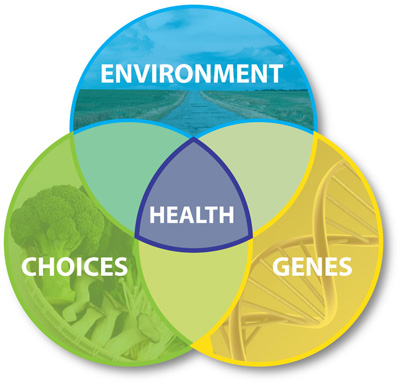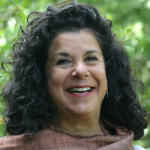Although October is “Breast Cancer Awareness” Month, Breast Cancer Awareness is Every Month
Susan Luck, Founder, Earthrose
Breast Cancer Prevention lies in understanding the complexity and interconnectedness of our environment, genetics, food supply, lifestyle habits, social networks, economic disparities, communities in which we live and work, and everything unique to each of us that influences our health and quality of life.
Addressing the real issues surrounding the global increase in breast cancer incidence includes public health education, corporate responsibility, and governmental regulation of harmful chemicals as part of initiatives that confront rising rates of breast cancer and all cancers. According to current research, cumulative toxic exposures often beginning in utero show clear links to increased risks for breast cancer later in life. The epigenetic effects of Endocrine Disrupting Chemicals (EDC’s) including Bisphenol A and Phthalates have been widely studied.
As pink ribbons and fundraisers escalate to raise awareness around the breast cancer “epidemic” this month, finding the “cure” has become a comforting concept. Pink is everywhere: football teams wear pink gloves on the field and pink ribbons are placed at car dealerships and shopping mall entrances. While all of these efforts are with good intention, we need to ask ourselves serious questions about pink ribbon marketing. How much money from pink ribbon products go to real breast cancer prevention? And, is it possible to find a “cure” in today’s world without addressing the environmental triggers? Sandra Steingraber, author of Living Downstream, addresses the latest corporate hook up in her blog: A Fracking Company Teams Up With Susan G. Komen to ‘End Breast Cancer Forever’ https://readersupportednews.org/news-section2/312-16/26296-pinkwashing-fracking-company-teams-up-with-susan-g-komen-to-end-breast-cancer-forever , questioning the misguided efforts and collaboration of fracking technology and breast cancer awareness.
Global research estimates that a women’s cumulative exposure to a multitude of toxic compounds including hormone mimicking chemicals that permeate our environment, may be responsible for up to 50% percent of all breast cancers today.The degree of alarm within the scientific community concerning the dangers of hormone disrupting environmental pollutants is also apparent in a report released this past year by the Health and Environment Alliance (HEAL), a European umbrella group of non-governmental research organizations. This report directly questions the growing tendency to label breast cancer a lifestyle and genetic disease. “We will not be able to reduce the risk of breast cancer without addressing preventable causes, particularly exposure to chemicals,” said the author of the paper, Andreas Kortenkamp, who heads the Center for Toxicology at London University’s School of Pharmacy.
The national advocacy group, The Breast Cancer Fund, whose mission is specifically focused on the identification and elimination of the environmental and preventable causes of breast cancer, has done a great deal to influence public awareness concerning the dangers of endocrine disruptors and environmental pollutants. The group publishes an annual review of the evidence – “State of the Evidence: The Connection between Breast Cancer and the Environment” – which is available from the organization’s website www.breastcancerfund.org
Mounting research implicates a cumulative toxic body burden with increased cancer rates in both animals and humans. A recent study by the Center for Disease Control and Prevention indicates that Americans of all ages carry a body burden of at least 148 chemicals, some of them banned for decades due to their toxicity. Alarmingly, newborn cord blood studies show evidence that at birth, an infant already carries a multitude of synthetic chemicals acquired in utero. We recall the Endocrine Disruptor DES and its consequences, resulting in cancers in the children and now grandchildren of women who took this hormone in early pregnancy. The chemical industry continues to state that the evidence is lacking regarding human harm in small doses while research continues to document the synergistic effects of combinations of chemical exposures over time. The full effects of endocrine disruptors are still a long way from being fully understood as they have only been around for only a few generations. While research continues, the evidence points to a clear connection.
Meanwhile, both scientists and advocacy groups are leading the way on informing the public and advising use of the Precautionary Principle while demanding health policy actions and regulation of the chemical industry.
In a May, 2014 study, Scientists identified the highest priority toxic chemicals to target for Breast Cancer Prevention and in a Peer-Reviewed Study to advance prevention efforts and showed that animal tests predict likely human breast carcinogens. Researchers identified 17 types of chemicals as a high priority because they cause mammary tumors in animals and many women are exposed to them. These include chemicals in gasoline, diesel and other vehicle exhaust, flame retardants, stain-resistant textiles, paint removers, and disinfection by products in drinking water.
Review of common Endocrine Disruptor Chemicals (EDC’s)
- Pesticides, herbicides, including pesticide residues in soil, food, water
- Dry cleaning chemicals
- Solvents paints, varnishes, cleaning fluids
- Spermicidal contraceptives and treated condoms,
- Perfume fragrances, “air fresheners”, cleaning fragrances
- Car exhaust, Car interiors -especially that new car smell (off gassing)
- Plastics, baby bottles, food storage containers, Styrofoam, tin cans (BPA lining)
- PVC plumbing pipes
- Pharmaceutical runoff in our water supply
- BHA and BHT, common food preservatives
- FD&C Red No. 3, a common food dye (erythrosine)
- Personal care products (parabens, phthalates) safecosmetics.org
- Antimicrobials includingTriclosan- used in hospitals as a hand washing bacteriocide. New evidence, published in the American Cancer Society Journal, Chemical Research in Toxicology, April, 2014, found that triclosan, as well as another commercial substance called octylphenol, promoted the growth of human breast cancer cells in lab dishes and breast cancer tumors in mice. Other recent studies of triclosan in animals have led scientists to worry that it could increase the risk of infertility, early puberty and other hormone-related problems in humans. Federal health regulators are just now deciding whether triclosan – the “ germ-killing” ingredient found in an estimated 75 percent of antibacterial liquid soaps and body washes sold in the U.S. – is ineffective, or worse, harmful. The U.S. Food and Drug Administration is planning to deliver a review this year of whether triclosan is safe. The ruling, which will determine whether triclosan continues to be used in household cleaners, could have implications for a $1 billion industry that includes hundreds of antibacterial products from toothpaste to toys. The agency’s review comes amid growing pressure from lawmakers, consumer advocates and others who are concerned about the safety of triclosan.
Prevention requires addressing the real issues surrounding the global increase in breast cancer incidence.
New innovative research directions are emerging to address the potential impact of our environment on our genetic expression.
In September, 2014, researchers in California put forth recommendations that the environment is an underutilized pathway to breast cancer prevention. Current research approaches and funding streams related to breast cancer and the environment are unequal to the task at hand. The California Breast Cancer Prevention Initiatives, a four-year comprehensive effort to set a research agenda related to breast cancer, the environment, disparities and prevention, identified 20 topics for Concept Proposals reflecting a life-course approach and the complex etiology of breast cancer; considering the environment as chemical, physical and socially constructed exposures that are experienced concurrently: at home, in the community and at work; and addressing how we should be modifying the world around us to promote a less carcinogenic environment. Redirecting breast cancer research towards prevention-oriented discovery could significantly reduce the incidence and associated disparities of the disease among future generations.
The Ecology of Breast Cancer: The Promise of Prevention and the Hope for Healing, a book by Ted Schettler, MD, MPH.(2013) makes the case that breast cancer is a disease arising from diverse societal conditions. Although well-recognized risk factors and a person’s lifestyle are important, they simply do not explain why many people develop the disease. Nor do they fully explain breast cancer patterns in populations. “In many ways, breast cancer is a design problem”, Schettler concludes. “It is not only a disease of abnormal cells but also of communities that we create and live in. Breast cancer is profoundly a public health concern, requiring a public health response. Thinking about breast cancer as an ecological challenge, helps us identify multi-level interventions that will reduce breast cancer risk and improve outcomes after diagnosis. One of emerging themes is that there are opportunities for reducing the burden and impact of this disease. The Ecology of Breast Cancer (full text)
Each of us can become more aware of how our environment may affect our overall health and the health of our families, communities, and workplace environments contributing to a multitude of health related issues including allergies, immune and neurological function. We each can begin by assessing our exposures and choosing to make changes wherever possible.
Integrative Nurse Coaches are guiding patients/clients in changing behaviors leading to healthier lifestyle strategies and supporting advocacy efforts for creating healthier communities and workplace environments. View INCA’s Programs and Courses
Breast Cancer Prevention Strategies:
- Choose your food wisely- eat organically if possible. Choose seasonal and local foods. Limit animal fats as endocrine disruptors, hormones, and heavy metals accumulate in fat tissue.
- Fish consumption: Large deep water “fatty” fish like tuna and swordfish contain higher levels of synthetic chemicals and heavy metals, so eat them infrequently. Wild caught salmon and cod and sardines are better choices.
- Avoid Pesticides – if you can’t buy all organic food, try to pick and choose. Certain crops are more heavily sprayed than others. The Environmental Working Group data base www.ewg.org offers guidelines on the fruits and vegetables containing both the highest pesticide residues and the lowest. Produce containing the highest pesticide levels include: peaches, apples, bell peppers, celery, nectarines, strawberries, cherries, lettuce, grapes, pears, spinach, and potatoes. Wash all fruits and vegetables thoroughly before consuming, or peel them if they are not organically grown.
- Avoid Chemicals in your home and in your personal care products. www.safecosmetics.org www.ewg.org/guides/cleaners
- Supplement your nutrition and support your body’s optimal functioning. Nutrients that have substantial research for supporting breast health include: Vitamin D 3, Cruciferous vegetables including broccoli and watercress, high in glucosinolates and sulforaphane, green tea, and curcumin and flax seeds.
- Support your body’s natural ability to detoxify by exercising and sweating (sauna and steam bath) on a regular basis. Drink plenty of filtered water.
- Increase intake fiber found in your whole grains, beans, vegetables, fruits, seeds (flax) and nuts to enhance elimination pathways.
- Drink antioxidant beverages. Research on protective antioxidants include pomegranate, blueberry, raspberry, and green juices.
- If you are planning on becoming pregnant (men and women), be vigilant about chemicals and put your attention into what you can eliminate for up to a year prior to conception. Follow guidelines on fish for pregnant women. https://www.americanpregnancy.org/pregnancyhealth/fishmercury.html
- Become an environmental detective- investigate the chemicals in your home, work, and community environments.
- Know your water supply. Find out whether your local community’s water testing program checks for hormone-disrupting chemicals and heavy metals. Read your local water quality reports. If you drink purified water out of plastic bottles, do not leave the bottles in your car or the hot sun for any length of time; heat activates the molecules in the plastic, which increases the rate at which the polycarbons leach into the water. Glass is best for carrying water. Purchase a solid carbon block drinking water filter.
- Avoid using plastics. The “safest”plastics are marked with the recycling codes 2, 4, and 5. Prevent infants from chewing on soft plastic toys and never microwave food in plastic or covered in plastic wrap. A good rule of thumb is that the softer the plastic, the more chemicals. Store foods in glass jars. Reuse hard plastic tubs. Limit use of plastic bags and cling wrap products. Assess the amount of plastic in your life and try to reduce it by five. For example: Bring a reusable mug to your local coffee stop. Buy a refillable glass or earthenware water jug. Invest in glass food storage containers that can be washed and reused for a lifetime. Use reusable cloth totes for groceries.
- Exercise your rights as a consumer- never doubt the power of consumer demand. Ask for green products when you don’t see them in your neighborhood stores. If you have a talent for organizing and recruiting people, use it to develop community ordinances regarding the use of chemicals in public places. It took a while to legislate no-smoking areas; hopefully “chemical-free” will not be far away. Encourage our youth to learn more about environmental issues and to pursue research into redesigning our sustainable future.
- Become a community advocate-Support local and federal clean air and water initiatives. Write to your local and state representatives and encourage them to vote for a healthy future. Support elected officials who make a clean environment their priority.
- Receive adequate restful sleep.
- Include exercise into your daily routine.
- Find quiet time to reduce stress, breathe and rebalance.
- Lowe your exposure to radiation via X ray and CT scans and opt for MRI and Ultrasound when possible.
- Avoid EMF exposures. Use headset with cell phones and avoid placing on body. For more info: www.ehtrust.org
- Lessen exposure to fumes from gasoline. Limit exposure to exhaust from diesel or other fuel combustion, for example from vehicles or generators. Don’t idle your car. Use electric rather than gas powered lawn mowers, leaf blowers and weed whackers.
21. Avoid furniture with polyurethane foam or ask for foam not treated with flame retardants.
****California’s decision to repeal its requirement that foam in furniture be flame resistant is expected to result in an increased availability of flame retardant-free furniture across the U.S.
22. Avoid stain-resistant rugs, furniture and fabrics.
23. Find a dry-cleaner who doesn’t use PERC (perchloroethylene) or other solvents; ask for “wet cleaning.”
24. Reduce exposure to chemicals in house dust by removing shoes at the door, and using a vacuum with a HEPA filter.
A recent Journal Article on Breast Cancer Survivorship has examined Breast Cancer Survivorship and Lifestyle Changes
Lifestyle Changes Improve Biomarkers Associated with Breast Cancer Recurrence and Mortality
A pair of Yale Cancer Center interventional studies involving breast cancer survivors found that lifestyle changes in the form of healthy eating and regular exercise can decrease biomarkers related to breast cancer recurrence and mortality. The abstracts were presented at the annual meeting of the American Society of Clinical Oncology in Chicago. https://www.hopkinsbreastcenter.org/artemis/201406/10.html
Together, we can create a healthier future for us all.
Resources and Advocacy
www.earthrose.org and International Nurse Coach Association Partner- for more information, read the Environmental Health News daily update and archived Newsletters
Upcoming National Environmental Events in Healthcare
National Breast Cancer Coalition’s Project LEAD® Workshop, an introductory level, 2 1/2-day workshop, part of the series of renowned training programs offered by NBCC. The course will focus on the basics of breast cancer molecular biology, the biomedical research process, understanding research information in the news and how to become a more effective breast cancer advocate in your community.
Alliance of Nurses for Healthy Environments
www.enviRN.org
Clean and Healthy New York
February 19-21, 2015 NYC Integrative Health Care Symposium www.ihsymposium.com
Environmental Health Panel-Susan Luck, Moderator- with Devra Davis, Robert Rountree, Walter Crinion
As Co-Founder of the International Nurse Coach Association for over a decade, Susan has been teaching and developing coaching program and currently through the Integrative Nurse Coach® Academy. She is Board Certified in Health and Wellness Coaching, Holistic Nursing, and Clinical Nutrition. Susan has authored several chapters on Nutrition and Environmental Health for Holistic Nursing, Integrative Nursing, and Nurse Leadership textbooks. She has co-authored Nurse Coaching and Self-Assessment chapters in; Holistic Nursing: A Handbook for Practice, 7th edition (2015-2020) and is co-author of the award winning book (ANA Gold Seal, 2015) Nurse Coaching: Integrative Approaches for Health and Wellbeing (2015) and The Art and Science of Nurse Coaching, an ANA Publication (2013), that led the way to establishing the standards for practice in the emerging Nurse Coach role. For the past 20 years, she has been the Nurse Coach and Nutrition consultant for Special Immunology Services at Mercy Hospital in Miami and is currently the Director of Nurse Coaching at Rezilir Health in Hollywood, Florida. Susan continues to integrate lifestyle health and wellness education into diverse communities, bringing her expertise and passion as a nurse, clinical nutritionist, and medical anthropologist. She has developed and implemented integrative health initiatives for diverse community organizations including the Yellow Courtyard, Integrative Health Symposium, Urban Zen, New York Open Center, The Lower East Side Girls Club, Kripalu, Omega Institute, and the University of Miami and Florida Atlantic University. As a concerned global citizen, Susan is the founder and education director of the Earthrose Institute, a not-for-profit organization dedicated to environmental health education and advocacy. She maintains a private practice as an Integrative Nurse Coach® with a focus on nutrition and the environment.
-
Susan Luck (1948-2022)https://inursecoach.com/author/susan-luck-1948-2022/
-
Susan Luck (1948-2022)https://inursecoach.com/author/susan-luck-1948-2022/
-
Susan Luck (1948-2022)https://inursecoach.com/author/susan-luck-1948-2022/
-
Susan Luck (1948-2022)https://inursecoach.com/author/susan-luck-1948-2022/





